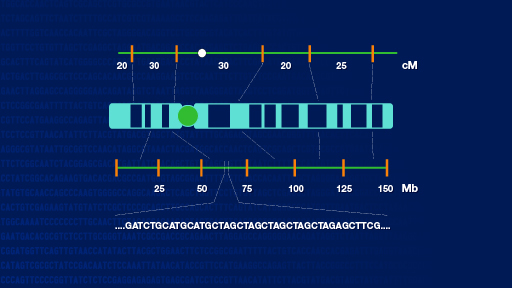
On Aug 19, 2008, James Watson and Craig Venter–the genetic pioneers instrumental to the successful genome sequencing-had their own genomes decoded, and thereby exhibited-albeit unwittingly–an early application of pharmacogenomics. GeneSight, a pharmacogenomic test that examines how a patient’s DNA responds to specific medications particularly those used to treat behavioral disorders, is an example of genome sequencing in practice. Mapping the human genome has also led to the birth of pharmacogenomics, the study of genetics and drug response. More than 100 different FDA-approved drugs are now packaged with genomic information that tells doctors to test their patients for genetic variants linked to efficacy, dosages or risky side-effects.
#How to map a gene code
In April 2003, scientists announced that they had sequenced the human genome, compiling a list of the three billion letters of genetic code that make up what researchers thought was humanity’s common DNA. Officially, Celera beat the HGP by several months. Craig Venter, a biotechnologist, biochemist, geneticist, and businessman thought his company, Celera Genomics, could finish the sequencing better and faster using different systems. However, these institutions had some competition. Why? A genome is a complete set of DNA, and has been referred to as the “ instruction book for human biology.” It was felt that doing so would open the window to the human mind and body. HGP began in 1990 when the NIH and the Department of Energy collaborated with 20 institutions in six countries including France, Germany, Japan, China, the UK and the US to sequence the human genome. It has become one of those givens that is so central to your thinking that you stop thinking about it, but if somebody took it away from you, your whole intellectual foundation would collapse, and it would be unimaginable what we would be doing now if we didn’t know about the double helix.” After Watson and Crick: A (Brief) History of the Human Genome Project “ is so intertwined in every bit of what we do experimentally, in terms of perceiving our own position in the scheme of life on this planet. Collins, director of the National Institutes of Health (NIH) and former leader of the Human Genome Project (HGP), says the structure of DNA is essential to our knowledge of genetic code: In an interview with NPR marking the 50th anniversary of Crick and Watson’s discovery, Francis S. Crick and Watson’s research is the foundation on which today’s genomics is built. Because the function of DNA depends in large part on its structure, identifying it as a double helix allowed researchers to unravel the fundamental role of DNA in biology, heredity and how genetic instructions are passed from one generation to the next. In the 1950s, James Watson and Francis Crick discovered the structure of DNA.

But, it traces its beginning to the blueprint of life itself – DNA. This history of genome sequencing is a long and winding road.
#How to map a gene manual
The sequencing of the human genome has given the world the instruction manual for making and maintaining the human body.

In only 15 years, genome sequencing has changed the way medicine is practiced.

Do you remember where you were when it was announced that the human genome had been successfully mapped? It’s a bit of a facetious question, but the event was so momentous-somewhat akin to Neil Armstrong’s walk on the moon–that we should have taken note.


 0 kommentar(er)
0 kommentar(er)
